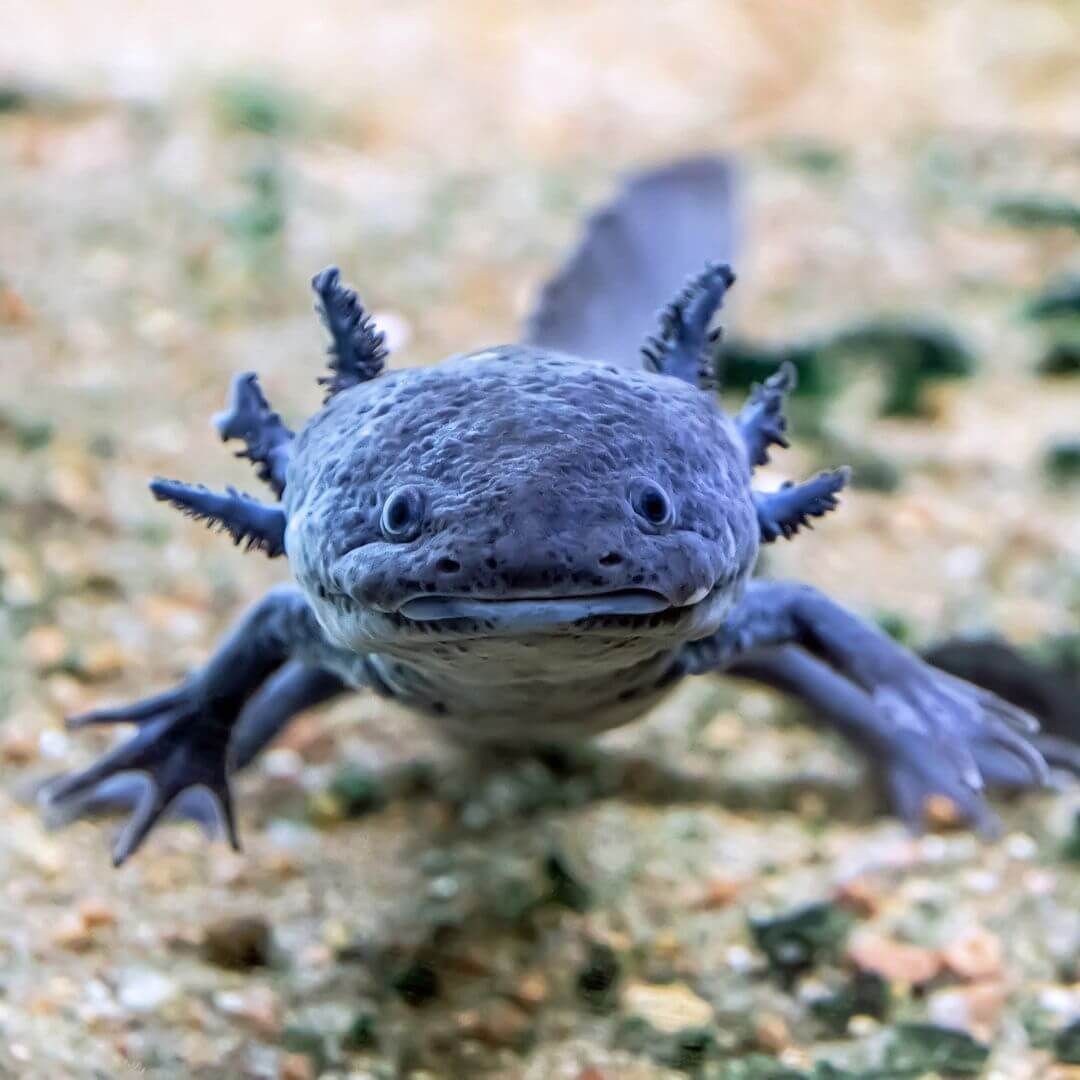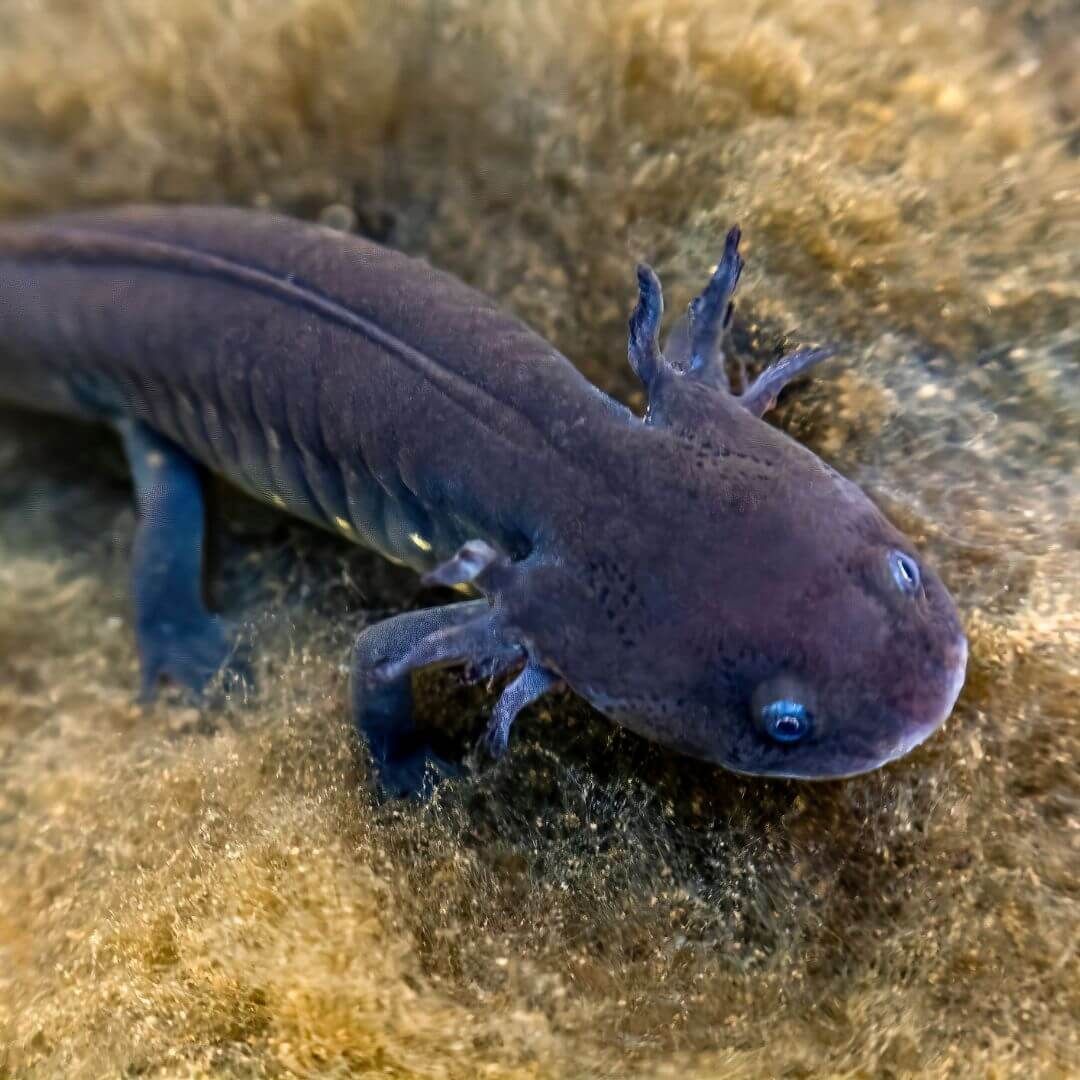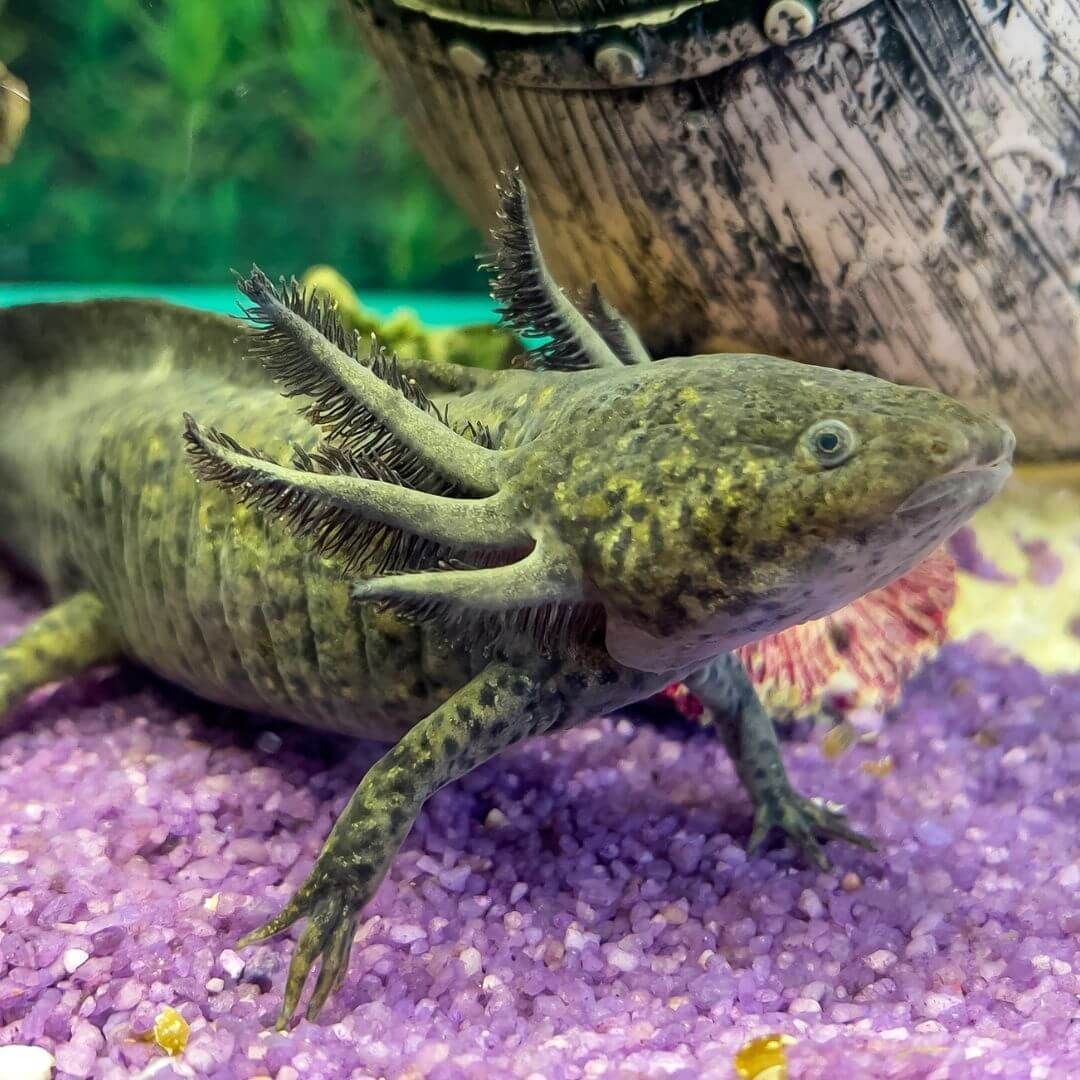Axolotls

Let's Learn About Axoltols
Word of the Week
Neoteny
Neoteny describes animals that keep their juvenile traits even when they are adults.
Axolotls demonstrate neoteny. They do not complete their metamorphosis. They look and act like larval salamanders for their whole life!
Fast Facts

Where do axolotls live?
Axolotls are found in two small lakes near Mexico City, Mexico.
The lakes axolotls depend on have been drained to stop flooding in Mexico City. Only a few small areas remain for the axolotl.
What do axolotls eat?
Axolotls are carnivores.
They eat small aquatic animals, like snails, worms, and insects. They use their vacuum-like mouth to pull in prey.


What traits do axolotls share?
While axolotls may be different colors, they have many other traits in common. Most axolotls...
- Do not complete metamorphosis.
- Have external gills and live in water.
- Can regenerate body parts, including their feet, eyes, and parts of their brain.
How many axolotls are there?
There is only one species of axolotl.
Unfortunately, axolotls are listed as Critically Endangered by the International Union of Conservation of Nature (IUCN). Scientists estimate their are less than 1,000 axolotls in the wild.

Species Spotlight
Axolotls
A Metamorphosis Mishap
Most frogs and salamanders go through metamorphosis. They start their life in their larval phase as a tadpole or eft. They live in water, breathe with gills, and eat plants and animals that also live in water.
Eventually, they make a special hormone that kick-starts their metamorphosis. Hormones are natural chemicals that an animal’s body makes. We have hormones, too! Some of our hormones, like melatonin, affect our sleep. Hormones control many different parts of our bodies.
When a frog or salamander’s body produces their special hormone, they begin to change. They absorb their gills, develop lungs, and move onto land. Most amphibians cannot reproduce until they are adults, so they must complete their metamorphosis.
Axolotls and some other salamanders cannot produce that important hormone, so they do not complete metamorphosis. Instead, they appear to stay in their larval phase for their whole life. However, unlike most salamanders, they CAN reproduce like this.
Scientists gave axolotls the metamorphosis hormone in labs and found they did complete metamorphosis. Axolotls that completed metamorphosis had a shorter lifespan and lost their healing abilities. While we might see adult axolotls living on land in a lab, we would never see them in the wild.
BRAIN BLAST
Do some research to learn what other salamanders demonstrate neoteny. Compare their life cycles. Why do they all stay in their aquatic larval phase?
Conservation Corner
Dwindling Populations
Hundreds of years ago, Lake Xochimilco in Mexico City was a large and healthy lake. The south shores were used to create chinampas (patches along the lake used for farming). Dams held water in the lake to use on crops. Animals that lived in the lake, like axolotls, also benefited!
Unfortunately, the dams were destroyed when the area was taken over by the Aztecs. The lake quickly shrank, making it challenging for wildlife to survive. The lake continued to drain for hundreds of years to support the many people moving to Mexico City. Today, only a few canals remain from the original lake. The axolotl's home is almost completely gone.
Scientists are struggling to save Lake Xochimilco, so they are looking at other ways to save the axolotl. Axolotls have been in captivity for research and as pets for more than one hundred years. Scientists hope to create a population of axolotls in captivity that can be reintroduced to a healthier, wild environment. See how young people are working to protect axolotls by visiting the link below.
Axolotl Abilities
Determine which abilities axolotls have by sorting them into the proper boxes.
Learn More!
Glossary
Adaptation
The process by which a species becomes more fit for its environment over the course of several generations. It is a result of natural selection.
Albino
Used to describe animals with a color mutation causing them to appear all white with red/pink eyes.
Amphibian
A cold-blooded vertebrate with permeable skin that goes through a metamorphosis!
Aquatic
Living in water.
Cannibalism
An animal that preys on members of its own species.
Captivity
When animals are kept and cared for by people (like in a zoo).
Carnivore
An animal that eats other animals.
Cold-Blooded
An animal that relies on the outside temperature to regulate their body temperature (reptiles and amphibians). Also known as ectothermic.
Critically Endangered
An rating from the International Union for Conservation of Nature (IUCN) that indicates a species is at an extremely high risk of extinction in the wild
Eft
The aquatic larval form of a salamander.
Endemic
Living in one place and nowhere else.
Extinct in the Wild
Used to describe animals that only exist in captivity, like at a zoo.
Gills
The respiratory organ that allows fish, amphibians in their larval phase, and crustaceans to absorb oxygen molecules from water.
Hormone
A natural chemical that an animal’s body makes that controls how its body functions.
Invasive Species
An organism that has been introduced to an area it is not native to.
Larva
The aquatic phase of an amphibian's life cycle occurring after the amphibian exits the egg.
Leucistic
Used to describe an animal with a mutation that causes them to appear mostly or completely white (with regularly colored eyes).
Metamorphosis
The process of an animal changing and developing from an egg to an adult through different life phases.
Neoteny
The condition of an animal retaining its juvenile traits as an adult.
Predator
An animal that hunts other animals for food.
Prey
An animal that is hunted and eaten by another animal.
Regeneration
The process by which an animal regrows a body part.
Reproduce
The act of producing offspring.
Species
A closely related group of animals with similar characteristics that are capable of reproducing (example: tigers).
Vertebrate
An animal that has a backbone.



